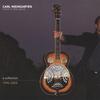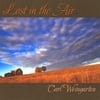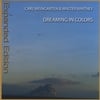Tuesday, December 4, 2012
1987
When my Delay Tactics bandmates told me they didn’t want to tour, I decided to hit the road on my own. This was at the end of 1986. We had been together for five years and our two albums had reached a peak in radio play. Touring was never part of our plan, but since the band had reached that crucial step in the ladder of success, this was an opportunity I knew would not last long and did not want to miss.
At first I was nervous about playing shows by myself, assuming the audiences had been listening to the group albums. I spent weeks writing a set of guitar music that I could not only perform solo, but was still in the tradition of the Delay Tactics sound. The technology to create a one-man-band experience was available at the time, and a few music pioneers had already led the way, but the gear was bulky, buggy, and expensive. I needed a rig that was lean, flexible, and could be packed into a suitcase. Making the most of the pedals I had, including a technical innovation called the Electro-Harmonix16-Second Delay, I assembled at my feet what was essentially a mini digital recording studio. With just my guitar and drum machine as the instruments, I could play, record, loop and layer tracks into a live performance. I played in cafes, theaters, student centers, and night clubs at a time when very few artists were touring this kind of music.
The cross-country road trips I took were sometimes more eventful than the gigs themselves, but I’m glad I did it while I was naive enough to risk everything and young enough to recover from it. The drives were long and tedious, often lasting late into the night as I tried to cover as many miles as possible. I could never bring enough music to listen to, and ran my cassette player without mercy until it would eat tapes in rebellion. But I got to see a lot of country and experience being on my own in a way I had never done before. Exhausted after many hours of driving and unable to find a motel, I’d park at a rest stop, lie across the front seats and sleep for a few hours before starting again.
Of the shows I did that year, the highest profile venue was opening for Bill Bruford’s Earthworks band at Night Stage in Boston. Bill Bruford was a very successful rock and jazz drummer whose most famous work was with the groups Yes and King Crimson. Earthworks was his own band and this concert was the second show of their first U.S. tour. I was brought in as the opening act under the wing and heavy airplay of radio station WZBC-FM.
On this occasion I could afford to fly rather than drive, and when I arrived at the club to set up, the soundcheck for Earthworks was still going on. Mr. Bruford, a tall and imposing figure, was very professional. After barking orders from the stage to the sound man, he offered me his thanks for waiting. Later I spoke with him backstage. As he warmed up by rapidly drumming on a stack of beer cases, I mentioned his recent Cloud About Mercury record with guitarist David Torn and how much I liked the album. Bill had seen my soundcheck and he was gracious. “Oh yes,” he said, smiling, “he’s (Torn) your kind of guitarist!”
It was a packed house and the performance flew by in a blur. In a rare gesture of humanity, the club sound engineer actually recorded my performance and gave me the tape. In that pre-Internet world, cassettes were king and could be sent to radio stations for broadcast later. Recently, I pulled the tape from storage and discovered that we had actually played two sets that night, a day before my birthday July 16, 1987. The only camera I had at the time was a Polaroid, which I rarely had time to use. Thankfully, however, my friend Susanne May was living in Boston when I did this show. A professional photographer, she came to the concert and covered the event. I’m really grateful to have these images. Aside from a box of tapes, a few letters, and newspaper clippings, this is the only evidence I have of that year on the road. --CW
Labels:
band,
Bill Bruford,
Boston,
carl weingarten,
concert,
Delay Tactics,
Earthworks,
guitar,
jazz,
looping,
music,
Night Stage,
photographs,
solo,
tour
Subscribe to:
Comments (Atom)










